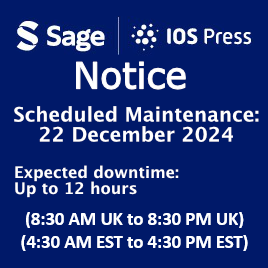Authors: Zorio, Esther | Murado, Julián | Arizo, David | Rueda, Joaquín | Corella, Dolores | Simó, María | Vayá, Amparo
Article Type:
Research Article
Abstract:
The role played by hemorheological alterations on acute myocardial infarction (AMI) in young patients remains a question of debate. We have carried out a case-control study of 84 AMI patients aged <45 years and 135 sex and age matched controls, in which blood viscosity (BV), plasma viscosity (PV), erythrocyte aggregation (EA) performed with the Myrenne (EA0, EA1) and the Sefam aggregometer (Ta, AI10, γD), erythrocyte deformability (ED) along with fibrinogen (Fbg), C-reactive protein (CRP) and plasmatic lipids i.e. total cholesterol (T-Chol) and triglycerides (TG) were determined. AMI patients showed higher, Fbg, TG, EA0, EA1, IA10, γD and lower Ta than
…controls (p=0.029, p<0.001, p=0.013, p=0.003, p=0.010, p=0.025) respectively. No differences in the other rheological parameters were observed. No differences in any rheological parameter were observed regarding the AMI type, number and score of stenosed vessels and the time elapsed since the thrombotic event. After multivariate adjustment, Fbg>380 ml/dl and TG>185 ml/dl were independently associated with a higher risk of erythrocyte hyperaggregability (OR: 5.5 CI 95% 1.04–29.27 and OR: 7.3 CI 95% 2.66–20.03) respectively. EA>8.85 was associated with a increased AMI risk (OR: 5.3 CI 95% 1.98–14.5). These results reinforces the view that in young AMI patients increased Fbg and TG may promote the development of ischaemic events not only through its known mechanism but also by altering rheological blood behaviour, mainly increasing EA.
Show more
Keywords: Acute myocardial infarction, haemorheology, erythrocyte aggregation
DOI: 10.3233/CH-2008-1065
Citation: Clinical Hemorheology and Microcirculation,
vol. 39, no. 1-4, pp. 33-41, 2008
Price: EUR 27.50





